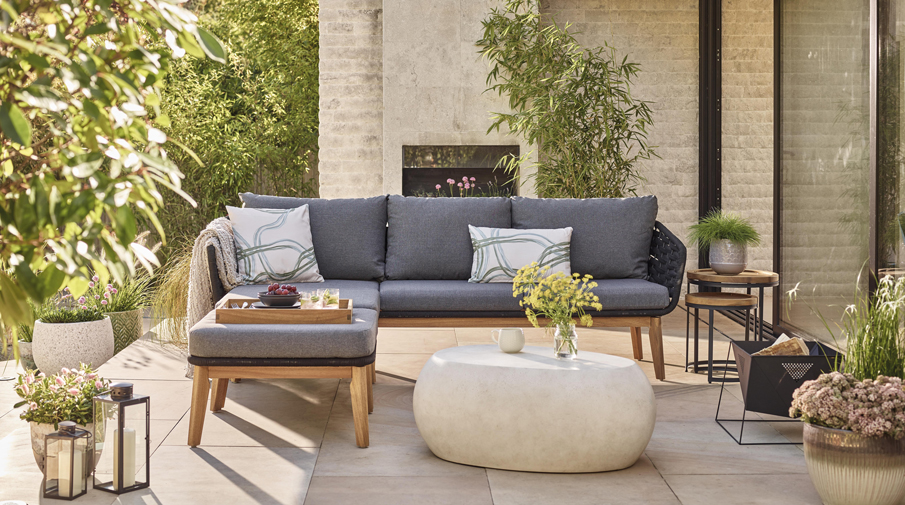Bring the outside in
Local interior designer Dominika Palladino explores the art of bringing the outside in with verdant aesthetics and natural light spaces, merged with modern design.

Blur the boundaries
Mix around with outdoor and indoor finishes between both spaces. Incorporate outside walls into your internal walls or continue the aesthetics of supporting beams into the interior design, for example with matching wood worktops or wood panel walls. Vice versa, your internal décor can also continue outside through painting garden walls or fences in the same shades as used inside. The trick is to blur the boundaries between both areas creating a visual illusion of one space altogether.

Consider biophillic design
A developing trend in the interior design world, its focus is on human interaction with nature and is already associated with many health benefits. By introducing greenery to your indoor environment, from large houseplants to installing a living wall are all ways in which you can begin to blur the space between your interior and exterior. Added benefits of real plants are improved air circulation as they absorb carbon dioxide, release oxygen and help purify and filter. According to many studies, even simply being surrounded by the colour green lowers stress levels, so it’s a win-win all round!

Night Lights
Don’t let your garden disappear once the sun goes down. Light up your paths, enhance a beautiful olive tree or showcase a garden sculpture. Create an ambience with candles or outdoor fairy lights hung around a pergola or alongside a garden fence. Top tip; installing dimmers and motion sensors will help you control the brightness and the mood but also save energy while providing visibility and added security.

Introduce more glazing
Frame your view with large format bi-folds or panel sliding doors with slimline, aluminium frames for an uninterrupted view to the garden and beyond. Don’t forget the ceiling is your best friend, too. Explore options to have skylights or add a roof lantern to an existing space – particularly when planning an extension. Large glazing will flood your space with natural light and sky views.

Connect the flooring
One of the most effective ways to create a seamless transition between indoor and outdoor spaces is using the same type of flooring across both spaces. For visual continuity, stone or porcelain tiling is best, particularly when your sliding doors or bifold have a flush threshold. I particularly like porcelain tiles as these are thinner than natural stone therefore easier to work inside and they age better with all weather conditions. Top tip: external paving should be laid to fall away from the house, so the slot drains at the threshold of the sliding or bifold doors is only taking the rainwater that’s running off the doors.

Cohesive style and colour scheme
My favourite, most effective and also most natural way to pick a colour scheme and style is in looking around us. Look at the colours that you see when you look out of your window or garden. Plants, pots and trees can be a wonderful guide to help choose your internal décor style and colours. Whether it’s a relaxed garden vibe with wild meadow flowers and colours inside that reflect this natural energy or a tropical theme or Japandi aesthetics (a hybrid mix of Scandi and Japanese), the key is that both outside spaces and inside areas complement and coordinate.

Lofts and balconies
Loft conversions are becoming the most popular way to add extra space to our homes. Roof windows bring light in and there’s something magical about seeing sky views. Conversions that can extend into a balcony are also worth exploring. Not only do you further extend your space, you also gain a panoramic view, flooding the space with natural light and also significantly improving air circulation. You will need to consider local building regulations as planning permission will be required to change the structure of your roof but if the budget and rules allow, the difference will be huge!